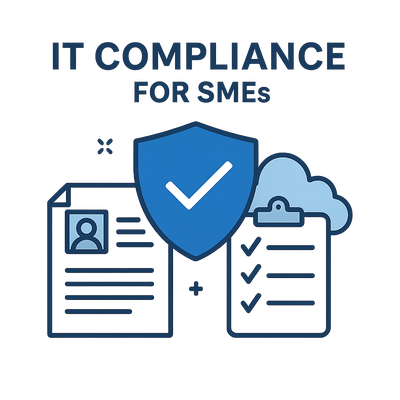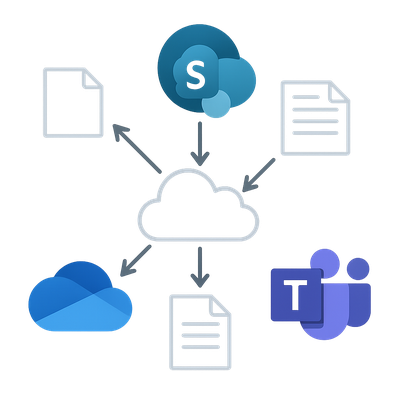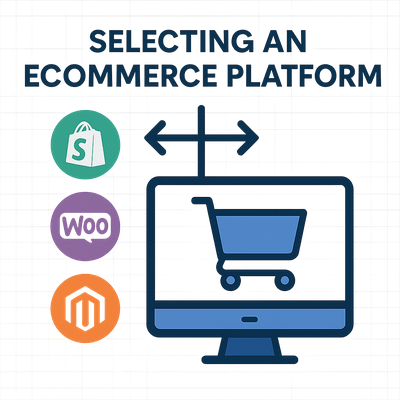
By Geek - July 2025
For small and medium-sized enterprises (SMEs), compliance in information technology is more than a regulatory checkbox, it’s a vital part of protecting your business, customers, and reputation. As cyber threats and data-handling laws evolve, failing to meet compliance obligations can result in fines, breaches, and loss of client confidence. Understanding how IT compliance fits into your daily operations is essential for growth and stability.
What Is IT Compliance?
IT compliance refers to the process of adhering to laws, standards, and best practices that govern how organisations handle data, maintain security, and manage technology. These frameworks ensure that systems are secure, reliable, and properly audited. Examples include GDPR, the Australian Privacy Principles, and ISO/IEC 27001 for information security management.
In practice, compliance means maintaining clear policies for data storage, access control, and breach response. It also involves regular risk assessments and staff training to ensure that procedures remain aligned with both business needs and legal expectations.
Why Compliance Matters for SMEs
Large enterprises often have dedicated compliance teams, but for smaller organisations, these responsibilities fall to business owners or outsourced consultants. Despite limited resources, compliance still offers major advantages:
- Reputation and trust: Clients and partners prefer working with businesses that take security seriously.
- Reduced legal exposure: Following compliance frameworks helps avoid penalties and data-breach liabilities.
- Operational resilience: Risk assessments and incident-response plans improve continuity during disruptions.
- Competitive advantage: Demonstrating compliance can win contracts that require certified standards.
“Compliance isn’t about paperwork, it’s about building a foundation of trust, security, and accountability.”
Key IT Compliance Standards for Small Business
- Privacy regulations: The APPs and GDPR define how personal data must be collected, used, and stored.
- Information security: Standards like ISO 27001 outline how to manage and safeguard sensitive information through documented controls.
- Industry frameworks: Sectors such as healthcare and finance may follow standards like HIPAA or PCI DSS for payment systems.
- Government guidelines: The Australian Cyber Security Centre provides the Essential Eight, a practical baseline for mitigating cyber risk.
Common Compliance Challenges for SMEs
Smaller businesses face unique challenges when implementing compliance frameworks. Limited budgets, complex requirements, and lack of internal expertise often make it difficult to meet every standard. Key challenges include:
- Understanding obligations: Many owners are unsure which regulations apply to their business or data type.
- Maintaining documentation: Compliance relies on clear records of policies, audits, and training activities.
- Balancing cost and risk: Over-investing in unnecessary controls can drain resources, while under-investment increases exposure.
- Keeping up with change: Regulations evolve quickly, requiring periodic reviews and system updates.
Building a Compliance-First Culture
Compliance starts with people, not just technology. Staff must understand the value of secure data handling, password hygiene, and prompt reporting of suspicious activity. Establishing clear roles, policies, and training programs embeds compliance into everyday operations.
For example, ensuring all employees use multi-factor authentication (MFA), secure file-sharing platforms, and encrypted communication tools reinforces compliance while improving cybersecurity. Periodic internal audits also help identify gaps before they become liabilities.
The Connection Between Compliance and Cybersecurity
Compliance and cybersecurity often overlap, but they are not the same. Cybersecurity focuses on protecting systems from attacks, while compliance ensures that you can demonstrate those protections through documentation and process control. A business may have strong security but still fail an audit if it cannot prove compliance.
“Cybersecurity keeps you safe, compliance proves it.”
Technologies That Support Compliance
Modern cloud platforms and productivity suites now include compliance management features by default. For example, Microsoft 365 offers data-loss prevention (DLP), encryption, and retention policies aligned with regulatory standards. Similarly, Google Workspace provides audit logs, secure sharing settings, and admin alerts.
Backup and archiving tools also play a key role. Storing immutable copies of emails, files, and logs ensures traceability and helps satisfy legal retention requirements. Endpoint-management systems enforce consistent device policies across both on-site and remote teams.
Auditing and Continuous Improvement
Compliance is not a one-time certification, it’s a continuous cycle of assessment, correction, and improvement. Regular internal or third-party audits verify that controls are functioning as intended. Audit findings should feed into improvement plans, reinforcing accountability at every level of the organisation.
How Non-Compliance Impacts Business Growth
Failing to meet compliance standards can have serious consequences beyond fines or penalties. It may disqualify your business from tender opportunities, insurance coverage, or partnerships with larger firms. In some cases, non-compliance following a data breach can result in reputational damage that takes years to repair.
How Can We Help You?
We help small and medium-sized businesses navigate the complex world of IT compliance. We identify which standards apply to your operations, assess your current systems, and implement security measures aligned with recognised frameworks. We configure tools such as MFA, data-loss prevention, and backup policies, while documenting each step for audit readiness. We also train your staff and monitor compliance progress so that you stay secure, confident, and fully prepared for client or regulatory reviews.







